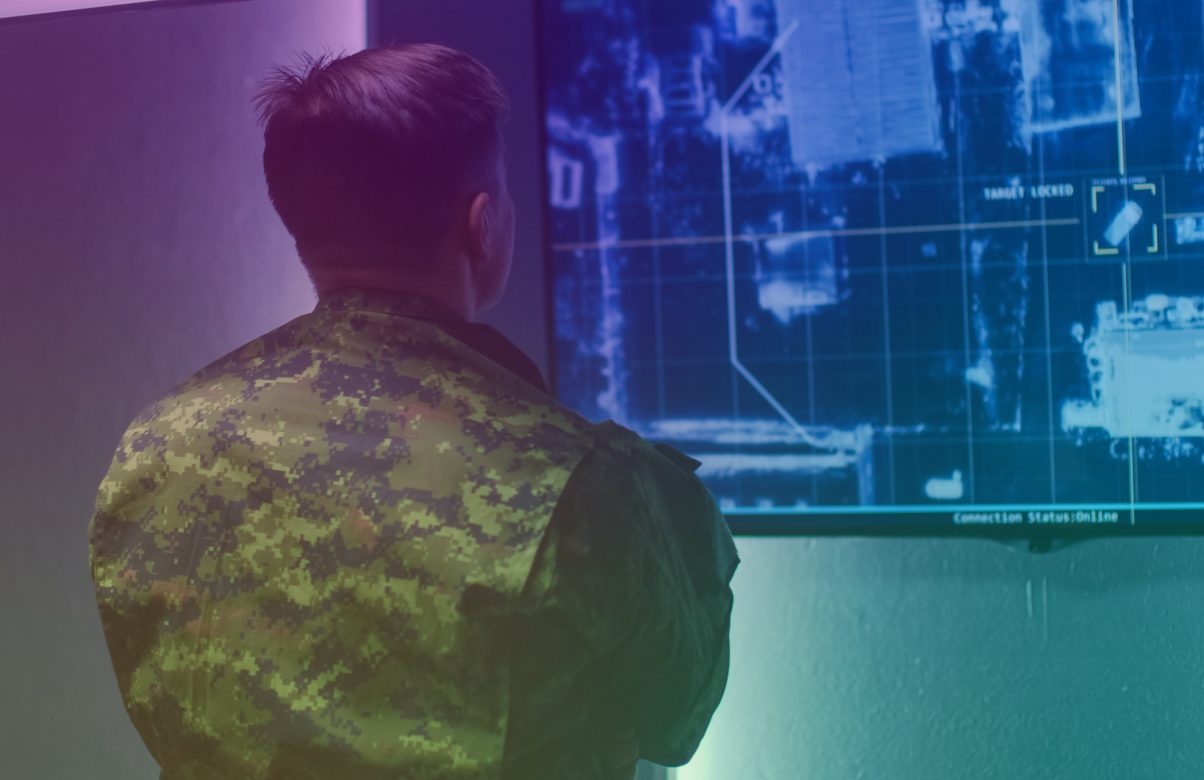The winds of change – evolution of 5G for military forces
by Macy Summers
2022 was a year that saw programs critical to military communications capabilities such as the DOD’s JADC2 (Joint All-Domain Command and Control) and Joint Warfighter Cloud Capability (JWCC) take some big and much welcome steps forward. Significant contracts were signed over the course of the year, and even despite the challenges that remain in delivering these key capabilities to the operational field, the sense we get is one of progress and solid intent.
Another key development we’ve seen in recent months is a shift in the approach to dealings with commercial technology providers in awarding defense contracts. Not to say this has never occurred before, however, the emphasis seems to have shifted away from a preference for bespoke, non-commercial technologies and more towards evaluating the challenges at hand in the context of the technologies available to solve them, regardless of the route these solutions have taken to arrive to the market.
This is a welcome shift, and one that will deliver significant benefits and advantages for forward-thinking governments and defense forces.

From deals to delivery
With these key programs very much at the heart of delivering the next generation of tactical communications, efforts to successfully synchronize Command and Control (C2) initiatives across the sea, land, air, space and cyber domains are in full swing. And while programs such as the ‘Mobile And Survivable Command Post’ project are still in the early stages of development, recent global events have only gone to highlight the critical need to share data across systems, services, and domains.
Another challenge for military forces is to implement systems with high levels of performance – more specifically high throughput, low power, low weight. However, the time taken to develop custom, bespoke technologies not only drives significant cost, it means that the equipment takes far longer to reach maturity. As a result, not only does this leave capability gaps in the field today, it means that by the time technologies do reach the end user, it often doesn’t deliver what is needed in the field.
This challenge is being recognized and increasingly we are seeing a shift to ‘Commercial Off the Shelf’ (COTS) equipment. In the past the main concern related to bringing COTS technologies to military applications has centered around security, stealth, and operational requirements. Now, we are increasingly seeing commercial companies offering systems capable of performing against these robust requirements, and some of the barriers to adoption are starting to fall.
Leading-edge 5G technologies are delivering capabilities today that will withstand the operational tests of tomorrow, and for technologies such as millimeter wave (mmWave) wireless, this move to open COTS systems brings an opportunity in that the technology can deliver data rates of multiple gigabit/s with low latency and high-power efficiency.

Military 5G
Whether it’s for scrolling social media or to operate a robotic system using wireless internet, 5G has become a staple in the everyday lives of many. Well established in the commercial world, 5G technology provides higher network speed and lower latency. The implementation of 5G in the defense sector will absolutely improve communications capabilities for military operations.
The Insight Partners’ “5G in Defense Market Report 2028” discusses various factors driving or restraining the market, including the need to provide uninterrupted internet connectivity over an increasing number and variety of systems and devices. However, the report cites security concerns, lack of standards, and protocols for the use of 5G that are still hampering the growth of military 5G.
These concerns, however, mostly stem from the fact that 5G commercial technology, governed by 3GPP (3G Public Partnership) standards, comprises standardised features and specifications and is subject to spectrum licence rules. 3GPP 5G doesn’t readily conform with government IT cybersecurity policies either. As such, 3GPP 5G is ill-suited to being applied to some of the key military use cases, particularly to Local Area Tactical Networks which are key to providing connectivity at the tactical edge.
IEEE 5G mmWave-based systems on the other hand use distributed, peer-to-peer mesh networking rather than a 3GPP centralized core, meaning there is no single point failure.
IEEE 5G mmWave also meets the necessary pass-through IT governance and cybersecurity standards. Importantly, mmWave technology can exploit licence-exempt, non-commercial spectrum frequency bands, such as the V-Band at 57-71 GHz.
But how are all these benefits delivered to the operational field in actuality, rather than in theory?
Stealth, security, success
IEEE 5G mmWave-based systems are proven to be able to deliver high-quality, quick-to-deploy, advanced security networks and communications programs for our customers and customized connected solutions even in volatile environments.
Developed from applying an in-depth knowledge of military operations with a proven track record in the delivery of advanced COTS systems, Blu Wireless’ 5G mmWave systems have been able to demonstrate to military forces that the capability exists today to support their complex vehicular tactical communications needs.
In a recent trial, we put our technologies to the test, interfacing them with the networking systems of land vehicles. This setup was then successfully tested in a variety of simulated battlefield scenarios. The Blu Wireless technology was proven to provide 360-degree communications coverage via mesh networking and to effectively deliver undisrupted gigabit communications links between military vehicles at typical maneuvering distances.
Tomorrow’s solutions, today
Whilst there’s no getting away from the complexities of delivering against multifaceted and significant military communications programs, the seeming willingness to incorporate COTS technologies into the mix can only deliver advantages for military forces and governments. If proven, systems can be deployed quickly and in a cost-effective way, without increasing risk to security and personnel, in fact quite the opposite.
To learn more about our 5G mmWave technology for military communications, contact us today.
